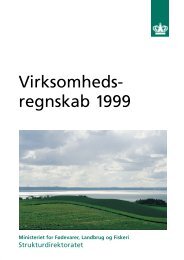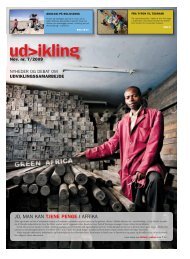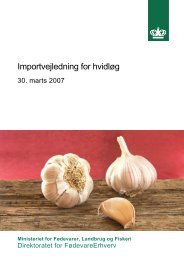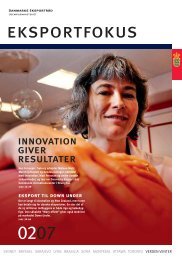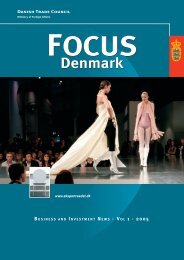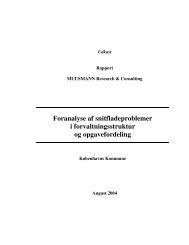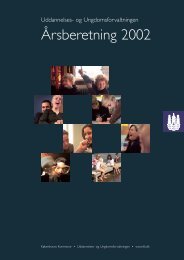Factsheet Denmark Danish Design
Factsheet Denmark Danish Design
Factsheet Denmark Danish Design
You also want an ePaper? Increase the reach of your titles
YUMPU automatically turns print PDFs into web optimized ePapers that Google loves.
Bus stop: The bus stop must help making public<br />
transport attractive. It must have a distinctive<br />
identity so that the traveller can easily spot it<br />
from a distance. It must provide shelter, it must<br />
have a bench – long waits may occur – and easily<br />
accessible information with understandable<br />
messages. Information must be limited to essentials<br />
and not drown in “noise”. Basic requirements,<br />
which many bus stops do not meet.<br />
Veryround. <strong>Design</strong>: Louise Campbell, 2006.<br />
Spun Chaise Lounge. <strong>Design</strong>: Mathias<br />
Bengtsson, 2003.<br />
Parts of a Rainbow. <strong>Design</strong>: Christian Flindt,<br />
2005.<br />
Miss Tilde. <strong>Design</strong>: Gopingpong, 2005. –<br />
Somewhere to keep private memories by a<br />
young radical design studio.<br />
Waves. <strong>Design</strong>: Anne-Mette Jensen and Morten<br />
Ernst, 1994. Manufacturer: Erik Jørgensen. –<br />
<strong>Danish</strong> designers’ play with organic forms.<br />
Plasma. <strong>Design</strong>: Erik Magnussen, 2005.<br />
Manufacturer: Engelbrechts. – Plasma proves<br />
that vision and innovation are not restricted to<br />
the new generation of <strong>Danish</strong> designers.<br />
10<br />
Some do. Photo: Movia’s bus stop in Copenhagen,<br />
designed by Knud Holscher <strong>Design</strong>.<br />
difficult to take them seriously, calling for<br />
more direct successors to the classic<br />
<strong>Danish</strong> design.<br />
However, the experiments and the new<br />
design were there to stay. The groups<br />
paved the way for today’s <strong>Danish</strong> designers,<br />
who have successfully either developed<br />
or broken with the traditional<br />
<strong>Danish</strong> design idiom.<br />
Simply put, there are today two trends<br />
within the new generation of <strong>Danish</strong> furniture<br />
designers and industrial designers.<br />
One is “wild” with pioneering design and<br />
an informal idiom using spectacular and<br />
sculptural forms. It is represented by<br />
designers such as Louise Campbell, Mathias<br />
Bengtsson, Christian Flindt, Sebastian<br />
Holmbäck and the Gopingpong<br />
group.<br />
The other is “disciplined”, with a clear<br />
basis in the <strong>Danish</strong> design tradition in its<br />
respect for classic craft, yet sufficiently



